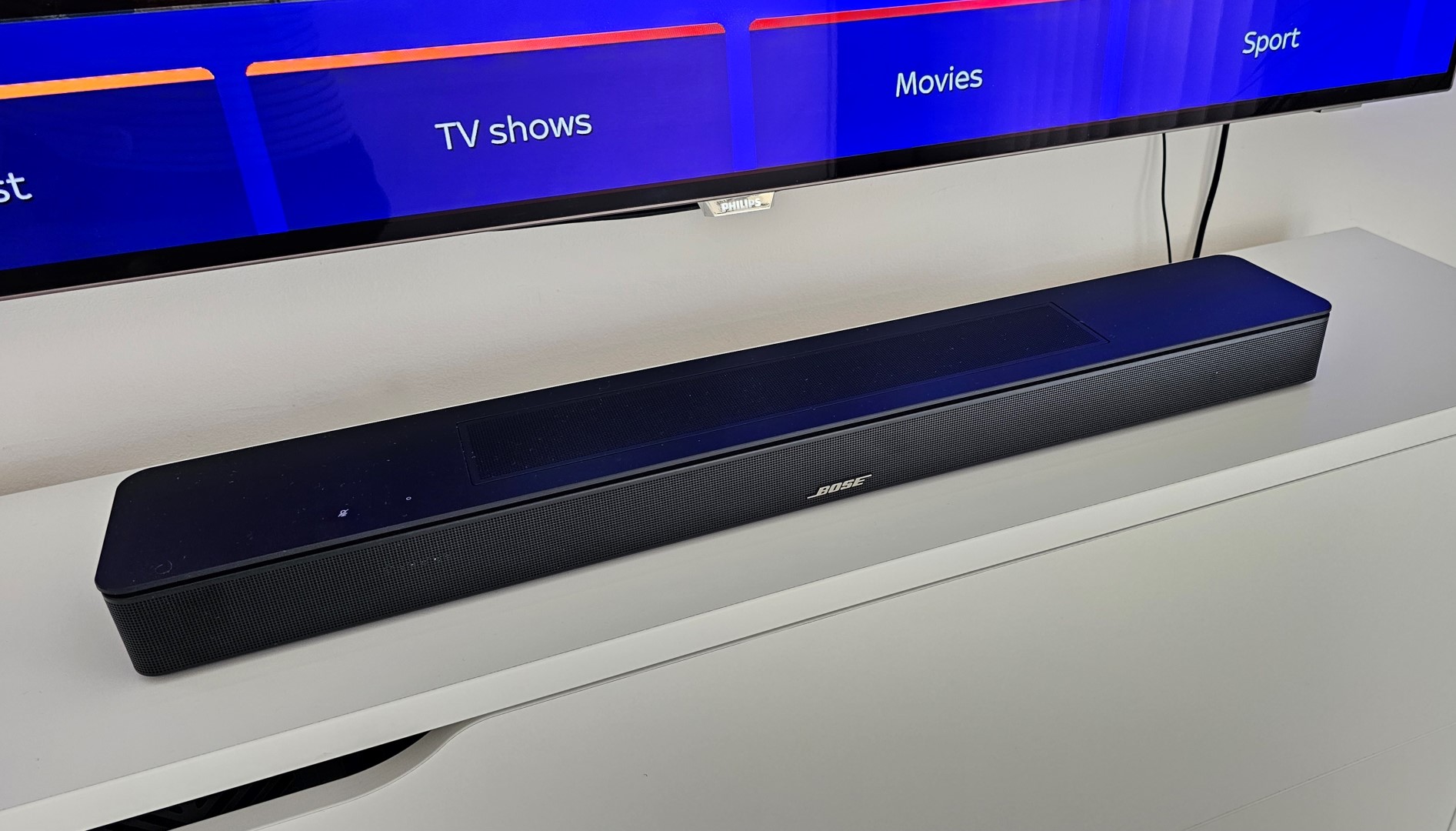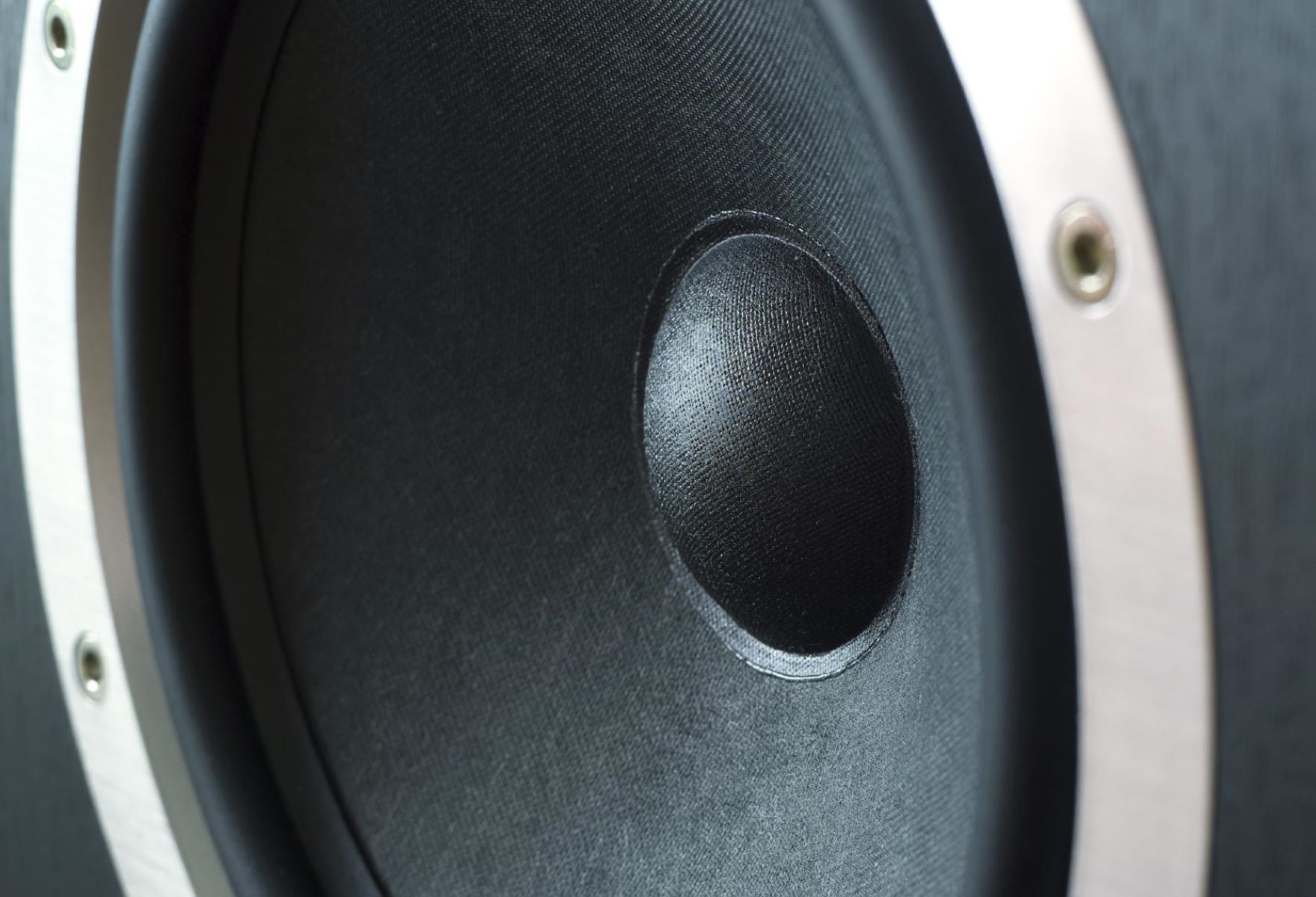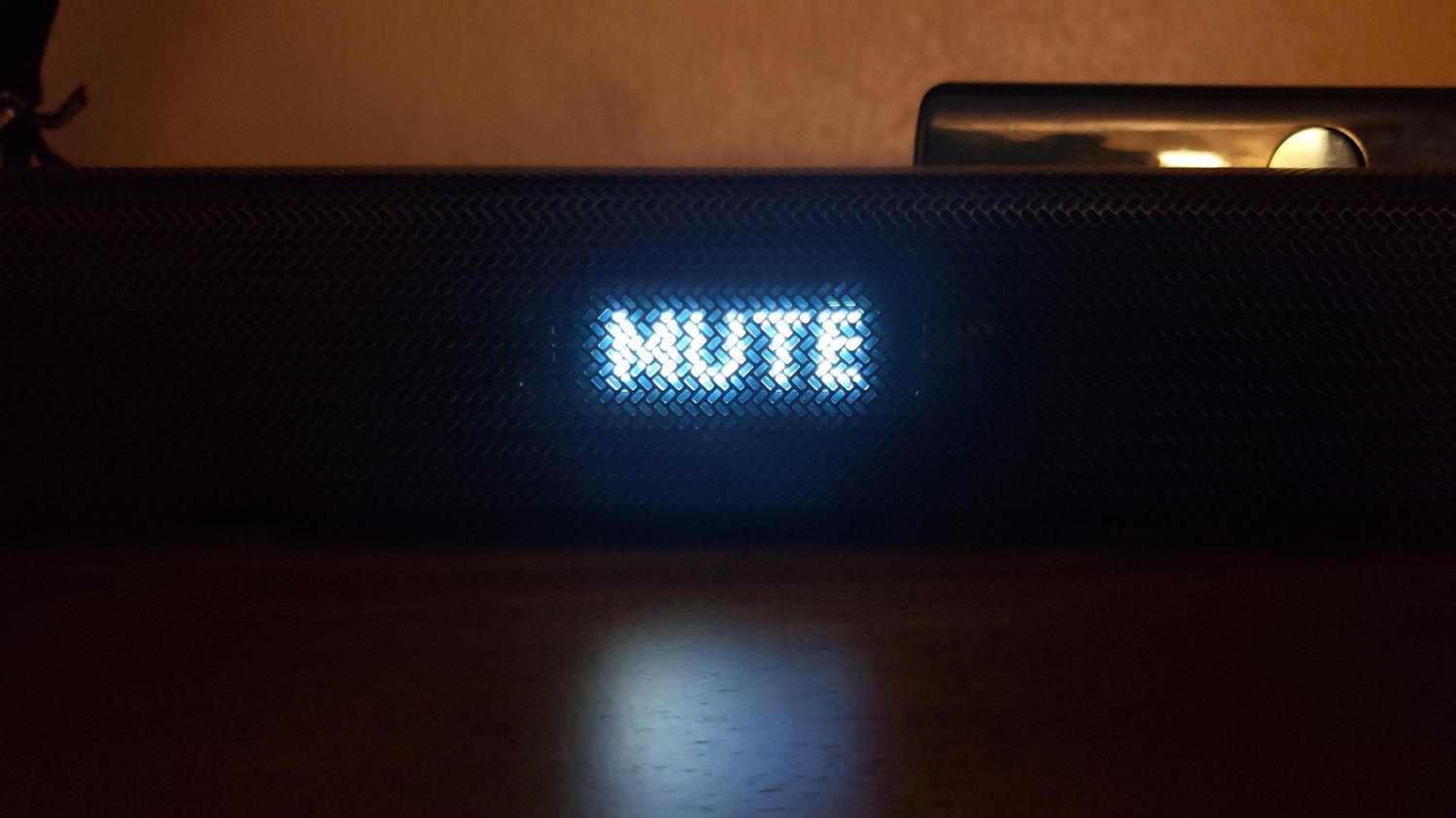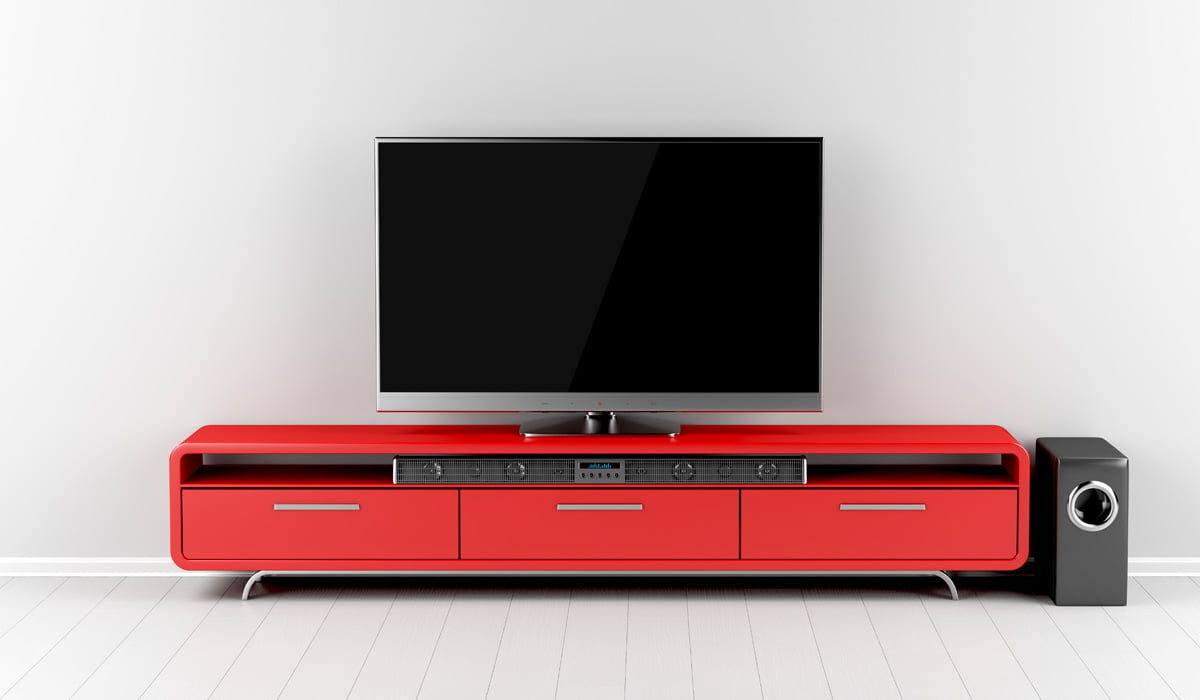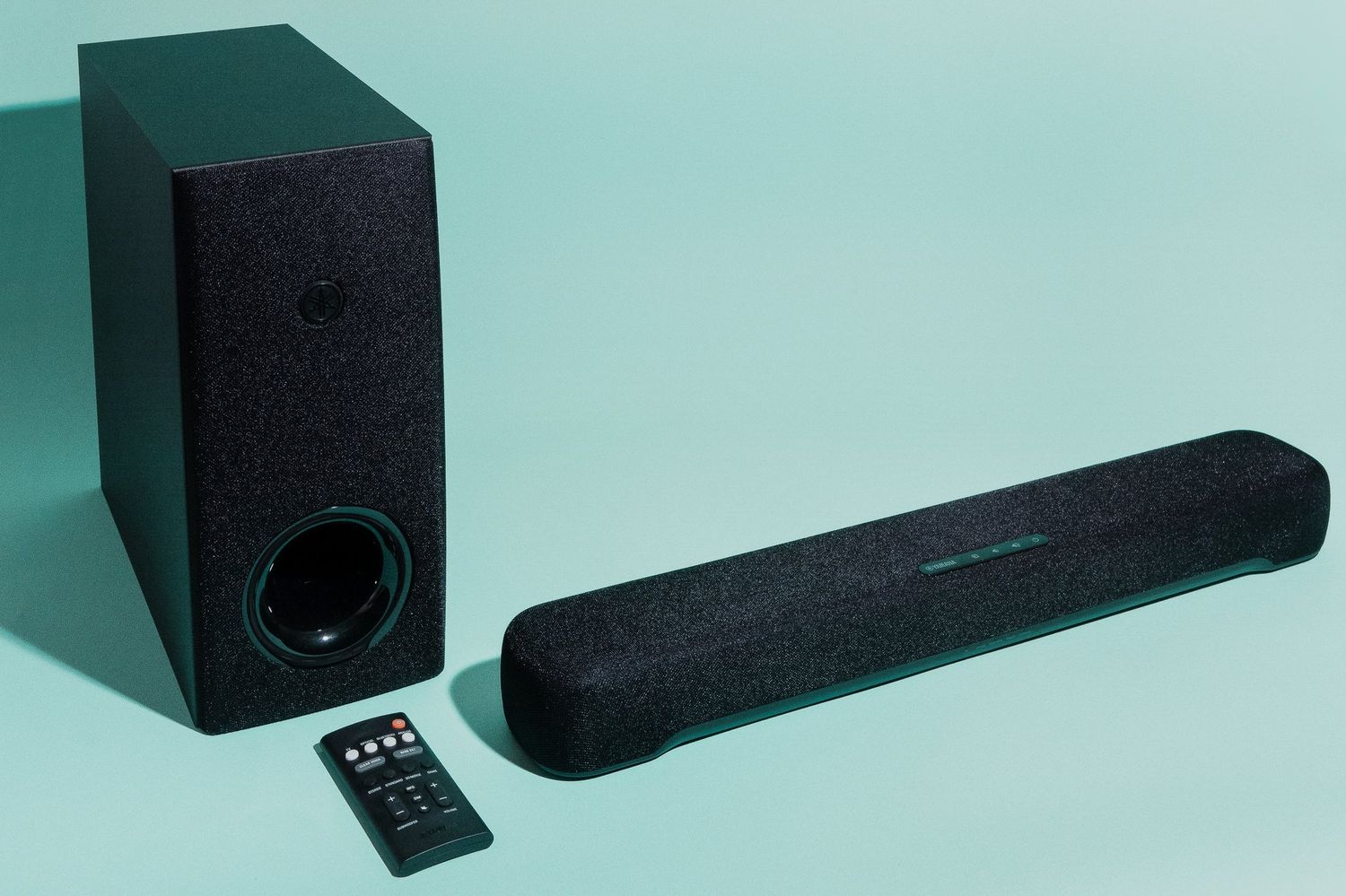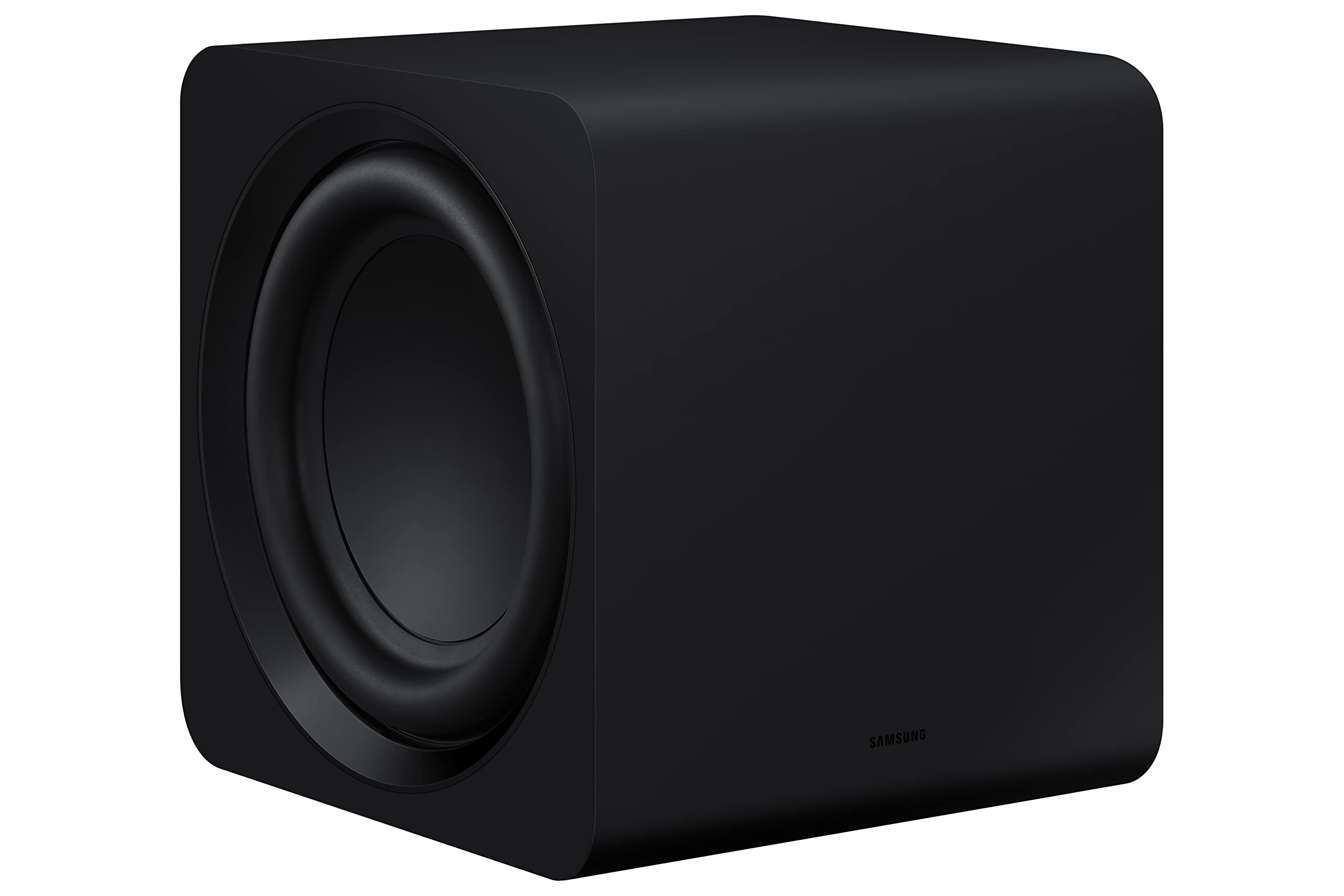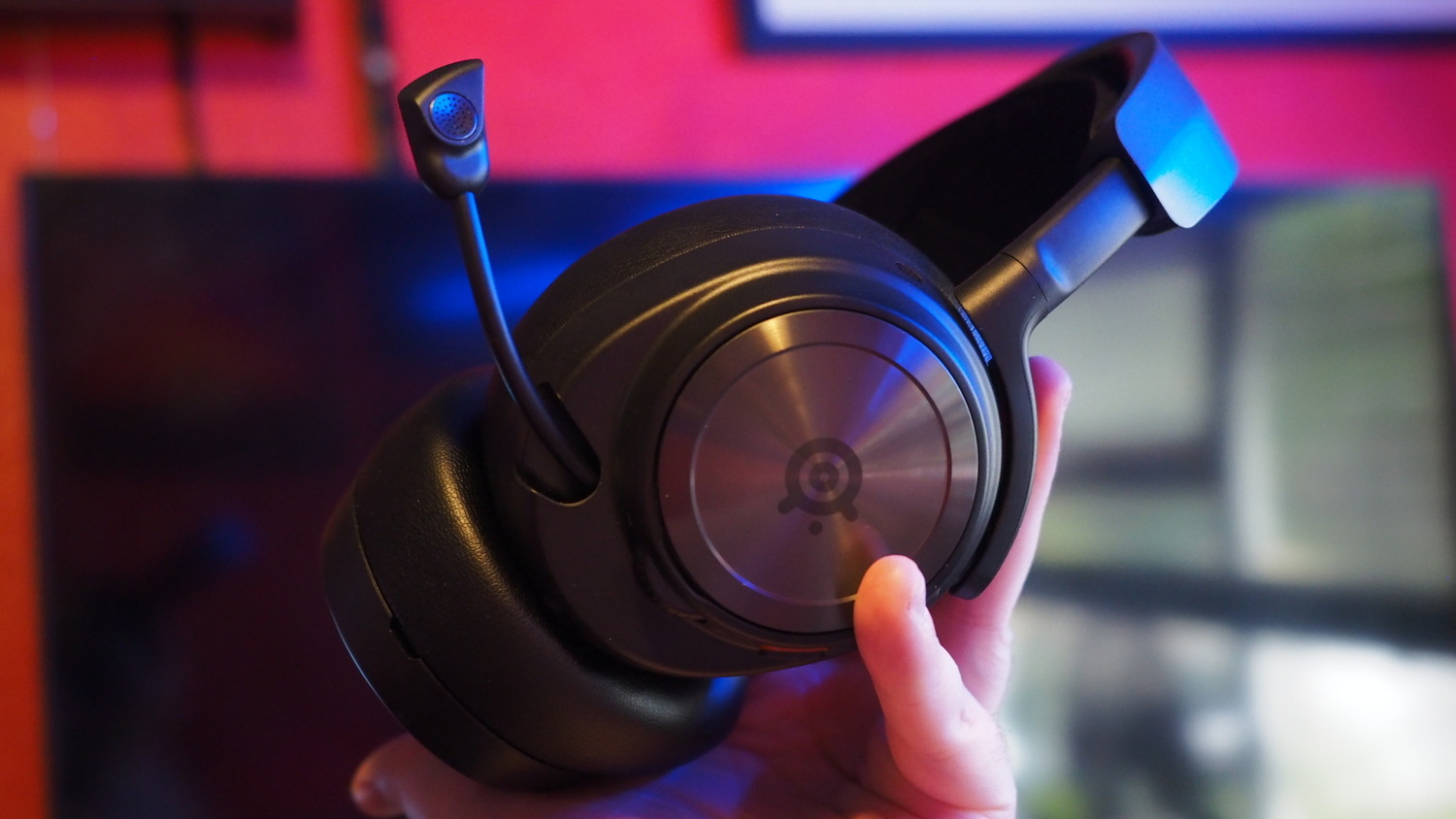Home>Production & Technology>Sound Bar>Why Is My Bose Sound Bar Not Working
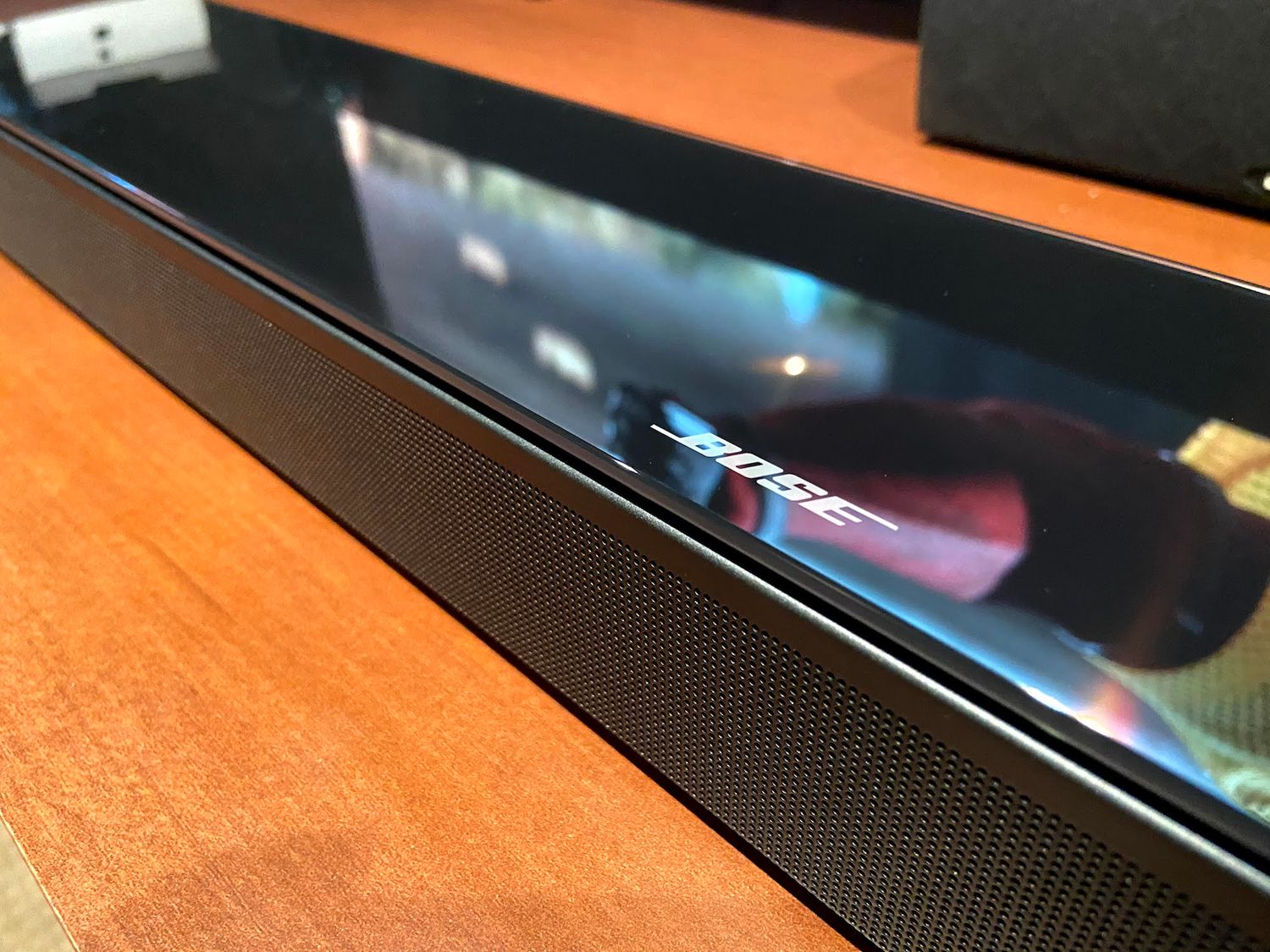

Sound Bar
Why Is My Bose Sound Bar Not Working
Modified: January 22, 2024
Discover the reasons why your Bose sound bar is not working and learn how to troubleshoot the issue. Get expert tips to fix common sound bar problems.
(Many of the links in this article redirect to a specific reviewed product. Your purchase of these products through affiliate links helps to generate commission for AudioLover.com, at no extra cost. Learn more)
Table of Contents
Introduction
Are you experiencing issues with your Bose sound bar? Don’t worry; you’re not alone. Sound bars have become an increasingly popular audio solution for home theaters, providing an immersive audio experience without the need for multiple speakers and complicated setups. However, like any electronic device, sound bars can encounter problems from time to time, leaving you frustrated and unable to enjoy your favorite movies, shows, or music.
In this article, we will walk you through some troubleshooting steps to help you identify and resolve common issues with your Bose sound bar. From basic power checks to firmware updates and adjusting settings, we’ll cover everything you need to get your sound bar up and running again.
But before we dive into the troubleshooting steps, it’s important to note that these suggestions are general and may vary depending on the model and specific features of your Bose sound bar. Also, if your sound bar is still under warranty, it’s recommended to contact Bose support for assistance.
Without further ado, let’s get started with the troubleshooting process and get your Bose sound bar back to producing crystal-clear audio in no time.
Troubleshooting Steps
When your Bose sound bar is not working correctly, it’s important to go through a series of troubleshooting steps to identify and resolve the issue. Here are some common troubleshooting steps you can follow:
- Check the Power: The first step is to ensure that your sound bar is receiving power. Check if the power cord is securely plugged in both into the sound bar and the power outlet. If the sound bar has a power switch, make sure it is turned on. Also, check if the power indicator light on the sound bar is illuminated.
- Verify the Connections: Ensure that all audio connections to the sound bar are secure and properly connected. Check if the HDMI, optical, or auxiliary cables are firmly plugged into their respective ports on both the sound bar and the audio source (e.g., TV, Blu-ray player, gaming console). If you are using a wireless connection, make sure the sound bar is successfully paired with the audio source.
- Reset the Sound Bar: Performing a factory reset can sometimes resolve issues with the sound bar. Refer to the user manual or the Bose website for instructions on how to reset your specific model. Keep in mind that a factory reset will erase any personalized settings and configurations, so it’s a good idea to jot down any important settings before proceeding.
- Update the Firmware: Outdated firmware can cause compatibility issues and performance problems. Check if there are any available firmware updates for your Bose sound bar. Visit the Bose website and search for the firmware update section. Follow the provided instructions to download and install the latest firmware onto your sound bar.
- Adjust the Settings: Sometimes, incorrect audio settings can lead to sound-related problems. Use the sound bar’s remote control or the Bose mobile app (if available) to access the settings menu. Check if the audio output mode, volume levels, and equalizer settings are properly configured. Adjust them as necessary to optimize the sound quality and ensure compatibility with your audio source.
- Contact Bose Support: If you have followed all the troubleshooting steps and your Bose sound bar is still not working, it’s advisable to contact Bose support for further assistance. They have trained technicians who can provide personalized guidance and solutions based on your specific issue.
By following these troubleshooting steps, you should be able to resolve many common issues with your Bose sound bar. Remember to consult your user manual for model-specific instructions and reach out for support if needed. Now let’s move on to the first step: checking the power.
Step 1: Check the Power
The first and most basic step in troubleshooting your Bose sound bar is to check the power source. Ensure that the power cord is securely plugged into both the sound bar and the power outlet. It’s also essential to verify if the power switch on the sound bar is turned on and if the power indicator light is illuminated.
If the power indicator light is not lit, try plugging the sound bar into a different power outlet to rule out any issues with the current outlet. It’s also a good idea to check if the power cord itself is damaged or frayed, as this can prevent the sound bar from receiving power.
Additionally, if your sound bar is connected to a power strip or a surge protector, try bypassing it and directly connecting the sound bar to a wall outlet. Sometimes, power strips can limit power supply or cause electrical interference, leading to issues with the sound bar.
Another thing to consider is the power source of the audio devices connected to the sound bar. For example, if you have a TV connected to the sound bar, ensure that the TV is also receiving power and turned on. Sometimes, an audio source that is not powered or turned off can result in no sound or poor audio quality.
If you have made sure all power connections are secure and the power indicator light is working correctly but your sound bar still doesn’t power on, it’s possible there may be an internal issue with the device. In such cases, it is recommended to contact Bose support for further assistance.
Now that we have addressed the power-related aspects, let’s move on to the next troubleshooting step: verifying the connections.
Step 2: Verify the Connections
After ensuring that the power is properly connected and the sound bar is receiving power, the next step in troubleshooting is to verify all audio connections. When the connections are loose or incorrectly configured, it can result in no sound or distorted audio from your Bose sound bar.
Start by checking the cables connecting the sound bar to your audio source (e.g., TV, Blu-ray player, gaming console). If you’re using an HDMI cable, make sure it is securely plugged into the HDMI port on both the sound bar and the audio source. Similarly, if you’re using an optical or auxiliary cable, ensure that it is properly connected to the corresponding ports.
If you have multiple audio devices connected to your sound bar, such as a gaming console and a Blu-ray player, make sure the correct input source is selected on the sound bar. Most sound bars have an input button on the remote control or the device itself, allowing you to cycle through different input options. Double-check that the input source matches the device you want to play audio from.
It’s also worth mentioning that some sound bars support wireless connectivity. If you have a wireless connection setup, make sure the sound bar is successfully paired with the audio source. Refer to the user manual or the Bose website for specific instructions on how to pair your sound bar with a wireless device.
If you have verified all the connections and confirmed that they are secure, try using different audio cables or switching to different audio input ports on the sound bar and the audio source. This can help eliminate the possibility of a faulty cable or a defective port causing the audio issue.
Keep in mind that some audio sources may require specific settings to output sound through the sound bar. For example, with a TV, you may need to access the audio settings menu and specify the audio output to be through an external speaker or audio system. Consult the user manual or the manufacturer’s website of your audio source to ensure the correct audio output settings are selected.
If you’ve followed the steps outlined above and the sound bar still doesn’t produce sound or the audio quality is poor, proceed to the next troubleshooting step: resetting the sound bar.
Step 3: Reset the Sound Bar
If your Bose sound bar is still not working properly after checking the power and verifying the connections, performing a factory reset can sometimes resolve the issue. Resetting the sound bar will restore it to its original factory settings, eliminating any potential software or configuration errors that may be causing the problem.
The process of resetting the sound bar can vary depending on the model, so it’s important to consult the user manual or the Bose website for specific instructions. Typically, you can initiate a factory reset by accessing the settings menu on the sound bar or by using a combination of buttons on the device or the remote control.
Before proceeding with the reset, it’s a good practice to jot down any personalized settings or configurations that you may want to restore later. This way, you can easily set them back up after the reset.
Once you have identified the reset procedure for your specific model, carefully follow the instructions. This usually involves pressing and holding the reset button or a combination of buttons for a certain duration until the sound bar resets itself. The reset process may take a few moments, and you may see various indicators or lights flashing during this time.
After the reset is complete, the sound bar will revert to its default settings. Take a moment to check if the issue you were experiencing has been resolved. Test the sound bar with different audio sources to ensure that sound is being produced properly and that the audio quality is satisfactory.
If the reset does not resolve the issue or if the problem persists even after resetting the sound bar, it is recommended to move on to the next troubleshooting step: updating the firmware.
Step 4: Update the Firmware
Outdated firmware can often cause compatibility issues and performance problems with electronic devices, including sound bars. Updating the firmware of your Bose sound bar can help resolve these issues and ensure optimal performance.
To check if there are any available firmware updates for your sound bar, visit the Bose website and navigate to the support or downloads section. Search for your specific sound bar model and look for any firmware updates listed. Download the latest firmware update file onto your computer.
Next, make sure that your sound bar is connected to your computer via a USB cable. Follow the instructions provided by Bose to transfer the firmware update file from your computer to the sound bar. This process may involve extracting the firmware file onto a USB drive and then connecting it to the sound bar.
Once the firmware file is transferred to the sound bar, disconnect it from the computer and proceed with the firmware update. This may require accessing the settings menu on the sound bar or using a specific combination of buttons on the device or the remote control.
During the firmware update process, it is crucial not to interrupt the power supply or perform any other actions on the sound bar. Allow the update to complete uninterrupted, as any interruption may result in a failed update and potential damage to the sound bar.
After the firmware update is complete, power off and then power on the sound bar. Check if the issue you were experiencing has been resolved and if the sound bar is functioning properly.
If you have followed the firmware update process and the sound bar is still not working correctly, it’s advisable to proceed to the next troubleshooting step: adjusting the sound bar settings.
Step 5: Adjust the Settings
If your Bose sound bar is still not functioning as expected after checking the power, verifying the connections, resetting, and updating the firmware, it’s time to delve into the settings and adjustments. Incorrect audio settings can sometimes cause sound-related issues, so it’s essential to ensure that the settings are properly configured.
To adjust the settings on your sound bar, you’ll typically use either the included remote control or a mobile app provided by Bose (if available). Access the settings menu using the remote control or app and explore the various options that are available.
Start by checking the audio output mode. Some sound bars have multiple audio modes, such as stereo, surround sound, or dialogue enhancement. Make sure the appropriate mode is selected based on your preference and the content you’re consuming. Experiment with different modes to find the one that provides the best audio experience for your needs.
It’s also important to check the volume levels. Ensure that the volume is not muted or set too low. Increase the volume gradually while playing audio to test if the sound is being produced. Adjust the volume to the desired level but be mindful of not setting it too high, as it can lead to audio distortion or damage to the sound bar or your ears.
Additionally, explore any equalizer settings that may be available. Some sound bars provide the option to adjust bass, treble, or other frequency ranges. Experiment with these settings to customize the audio output to your liking and to match the characteristics of your audio source.
If you have connected the sound bar to a TV, check the audio output settings on the TV itself. Some TVs have audio settings that need to be configured to output audio to external speakers or audio systems. Make sure the TV is set to send audio through the sound bar.
During the adjustment process, it can be helpful to play different types of audio, such as music, movies, or TV shows, to ensure the sound bar performs well across different content. Test the sound bar with various sources to ensure compatibility and audio quality.
If you have followed the above steps and are still experiencing issues with your sound bar, it’s recommended to contact Bose support for further assistance. They can provide personalized guidance based on your specific problem and device model.
With the settings properly adjusted, your sound bar should now be ready to deliver outstanding audio performance. If you encounter any difficulties, don’t hesitate to reach out for professional support.
Step 6: Contact Bose Support
If you’ve followed all the previous troubleshooting steps and your Bose sound bar is still not working properly, it’s time to reach out to Bose support for further assistance. Bose has a dedicated support team that can provide expert guidance and help you resolve the issue.
Before contacting Bose support, gather all the relevant information about your sound bar, including the model number, serial number, and any error messages or specific symptoms you have encountered. This will help the support team understand your issue better and provide more accurate solutions.
There are multiple ways to get in touch with Bose support. One option is to visit the Bose website and navigate to the support or contact page. From there, you can find contact information such as phone numbers, email addresses, or live chat options specific to your region.
When reaching out to Bose support, clearly explain the problem you’re experiencing and the steps you have already taken to troubleshoot. Provide the necessary details about your sound bar and any relevant information that can assist the support team in diagnosing the issue.
The support team may guide you through additional troubleshooting steps or suggest further actions specific to your sound bar model. They may also offer repair or replacement options if necessary, especially if your sound bar is still under warranty.
It’s important to remain patient throughout the support process, as finding a solution may take some time. Follow the instructions provided by the support team and provide any requested information promptly to facilitate a smoother resolution to the problem.
Remember that Bose support has the expertise to assist you effectively, and they are dedicated to ensuring your satisfaction with their products. By contacting them, you can receive personalized assistance tailored to your specific issue and get your Bose sound bar working perfectly again.
With that said, we have covered all the troubleshooting steps to help you resolve common issues with your Bose sound bar. By following these steps with care, you should be able to identify and fix many issues that can arise. Enjoy your enhanced audio experience and immerse yourself in the world of entertainment with your restored Bose sound bar.

